There are many types of jumps in ballet, depending on how they are performed.The determining factor for categorizing jumps is whether the push-off from the ground is done with the weight divided equally between the two feet, or whether the push-off is done primarily with one foot. Landing follows the same guidelines. In this article, we explain the 5 types of jumps in ballet in detail.
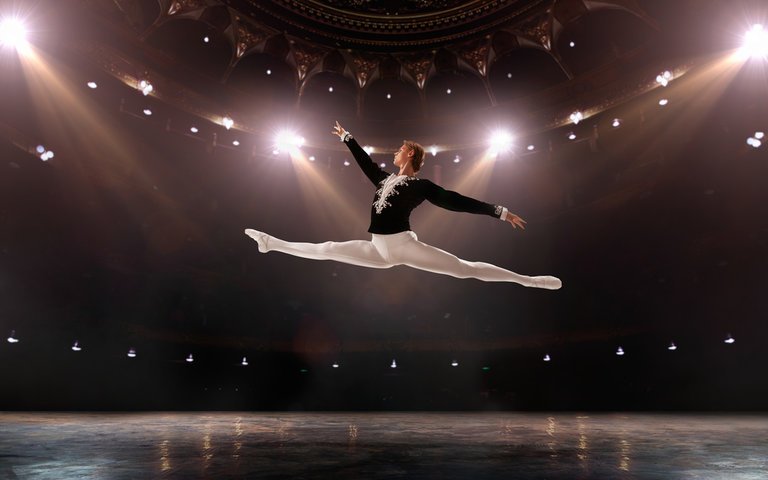
Table of Contents
First Category: Jumps from two feet to two feet
Some of the most basic steps fall into this category. But despite its simplicity, you can already begin to experience the ballon, a fundamental characteristic of ballet jumps.
In this type of jump, there is no weight transfer. Weight is evenly distributed across both feet, maintaining a neutral pelvic alignment and avoiding torso arching. Also, do not bring your legs behind your hips. On the other hand, the push-off is vertical, and when taking off from the floor, stretch your legs as much as possible.
The landing is perfectly centred. Remember that the weight must be on the balls of the feet, not on the heels. Finally, the weight is always in the same place, whether you are in the air or on the ground.
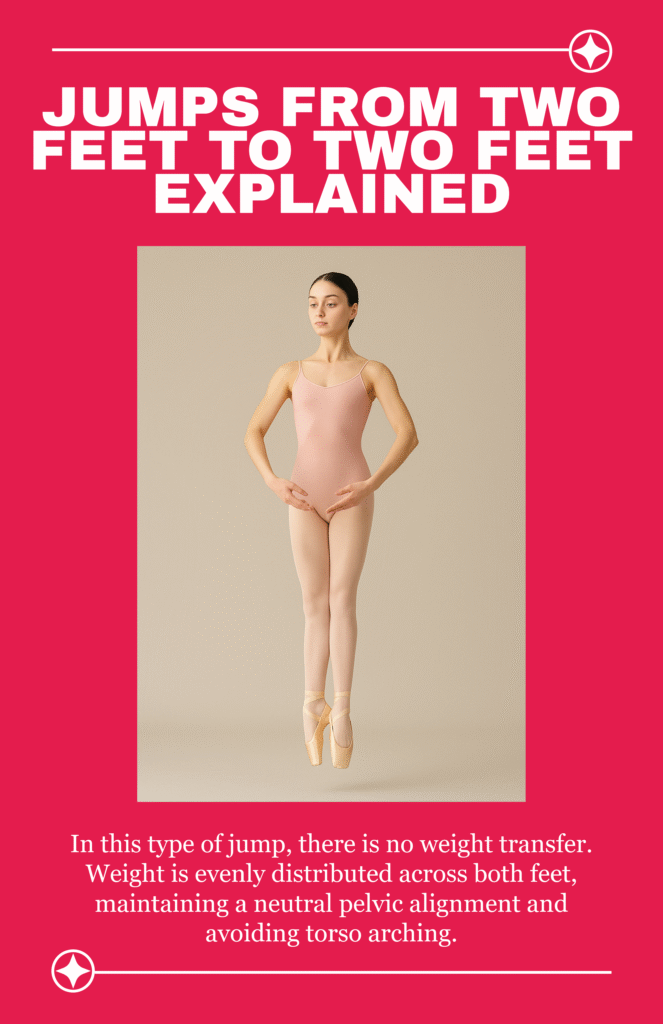
Examples:
- Temps Levé
- Changement de Pied
- Soubresaut
- Pas Échappé
- Royale
- Tour on l’air.
Tour on l’air
Second Category: Jumps from two feet to one foot
In these jumps, you use both legs and feet simultaneously to propel yourself and soar into the air. But you need extra effort and strength to control landing on one foot.
Weight is transferred to one leg either at the height of the jump or just before the moment of landing. Although the body is supported on one leg, the entire weight of the body is not allowed to fall entirely on the leg; rather, much of it is absorbed by the pelvis.
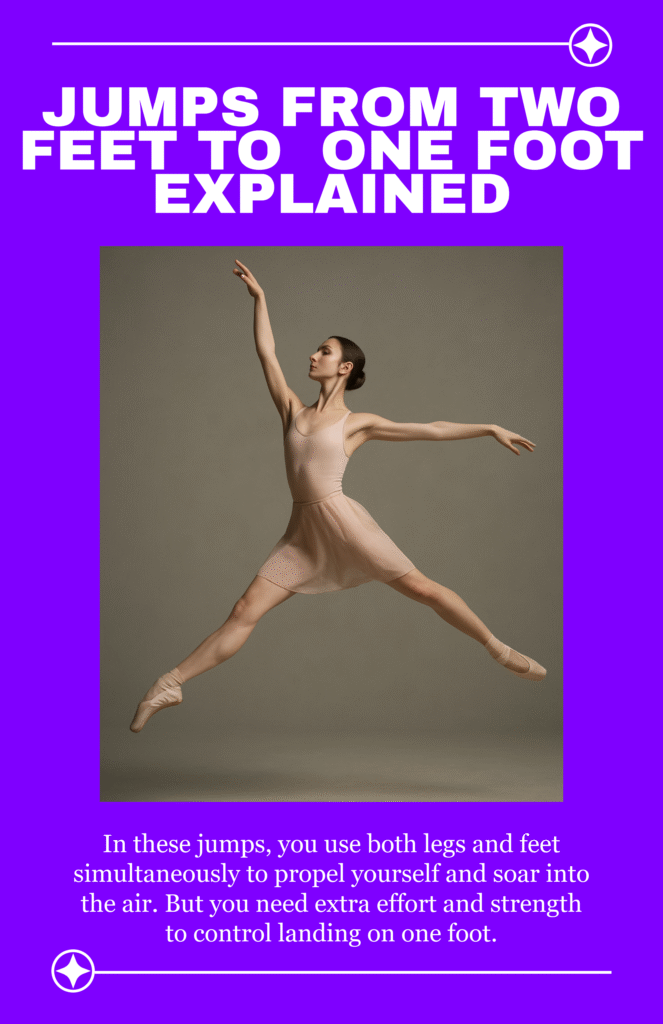
The plié of the supporting leg acts like the contracting coils of a pogo stick at the moment of landing, minimizing the stress of landing and coiling for the next jump.
In these types of jumps, the pelvis is always centred. This means that the line of gravity passes through the centre of the pelvis and the weight remains close to the axis. This enables your body to recover quickly or change direction without time being lost.
Working on the fondu at the barre is also crucial. Perfecting this movement will empower you to improve jumps that land on one foot.
At the moment of landing, the weight returns to the centre for an instant, allowing a quick transition to the next step. This ensures a safe landing and also vertical push-off for the next jump.
Examples:
- Sissone simple
- Sissone Tombé
- Pas Failli
- Sissone ouverte
- Entrechat trois vole
Third category: One-foot to two feet jumps
One-foot jumps need more strength than two-foot jumps. The dancer must propel herself from the ground into the air using only one foot. And once in the air, she must often be able to assume and display a designated position.
The lightness, quickness, and precision of your jumps depend on your ability to manipulate weight relative to the axis.
So, the jump begins on one leg, as it does in the jump from one foot to one foot. The same principles apply here in the push-off. Then, for the landing, we can again apply the centred weight distribution of the first category jumps (from two feet to two feet). So, the landing is done evenly on both feet.
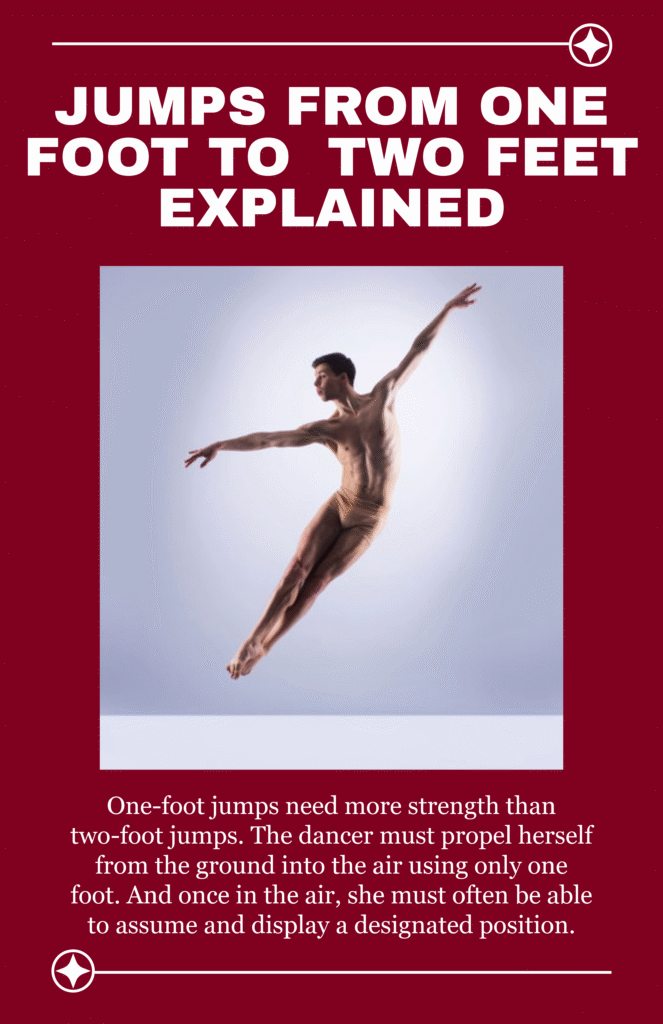
Examples:
- Assemblé
- Double assemblé
- Brissé
- Grand Assemblé
- Assembly battu
Fourth category: Jumps from one foot to the other
Most of the steps in the Allegro fall into this category. These jumps require maximum energy and power in the foot and the supporting leg to be able to lift off the ground. Once in the air, the dancer must often establish a position and maintain it. Finally, the dancer will need a lot of strength to control the landing on one foot.
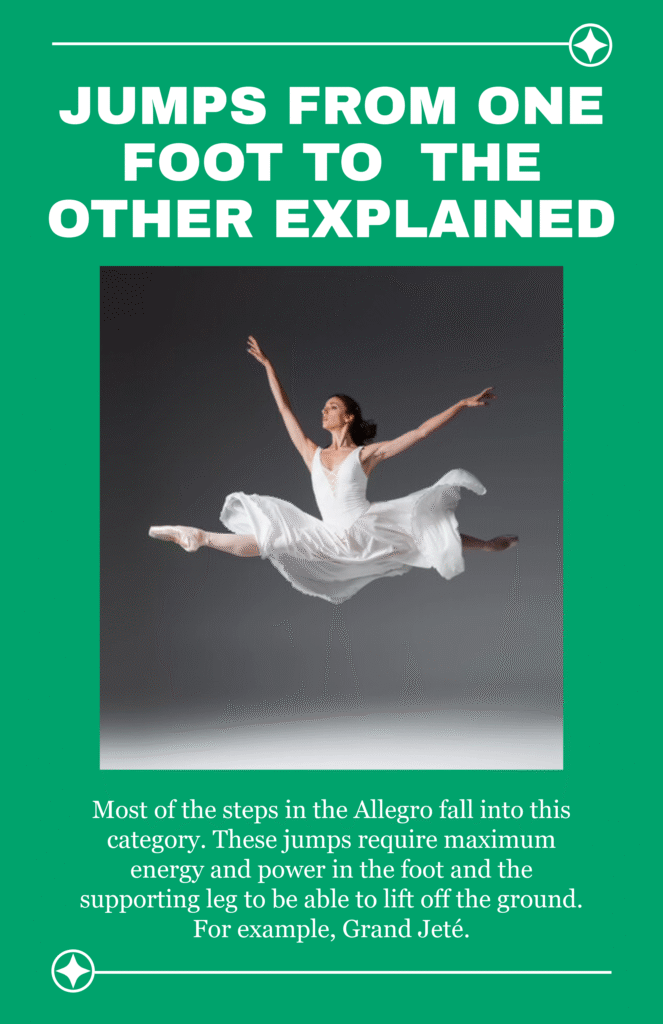
In this category, the weight-absorbing capacity of the pelvic area is crucial. Without its help, the strength of the supporting leg alone would not be sufficient to lift the body off the ground. Only through the cooperation of the pelvis, which does not allow the entire weight of the body to descend onto the foot, can the leg act as a springboard and propel the body upwards.
If you can’t adjust the weight at each successive stage, the height, grace and safety of the jump will be affected.
Examples:
- Pas de basque
- Emboité
- Jeté
- Grand jeté
- Chasse
- Saut de basque
- Brisé volé
- Pas de chat
- Gargouillade
Glissade/jeté, coupé/step/jeté, pas de chat, pas de bourrée, entrechat quatre, soubresaut.
Fifth category: Jumps and landing on the same foot
These jumps are considered the most difficult of all the categories. In all of them, the weight is on the supporting leg at the moment of landing and shifts to the centre when the supporting leg is pushed off, to return to the supporting side when landing.
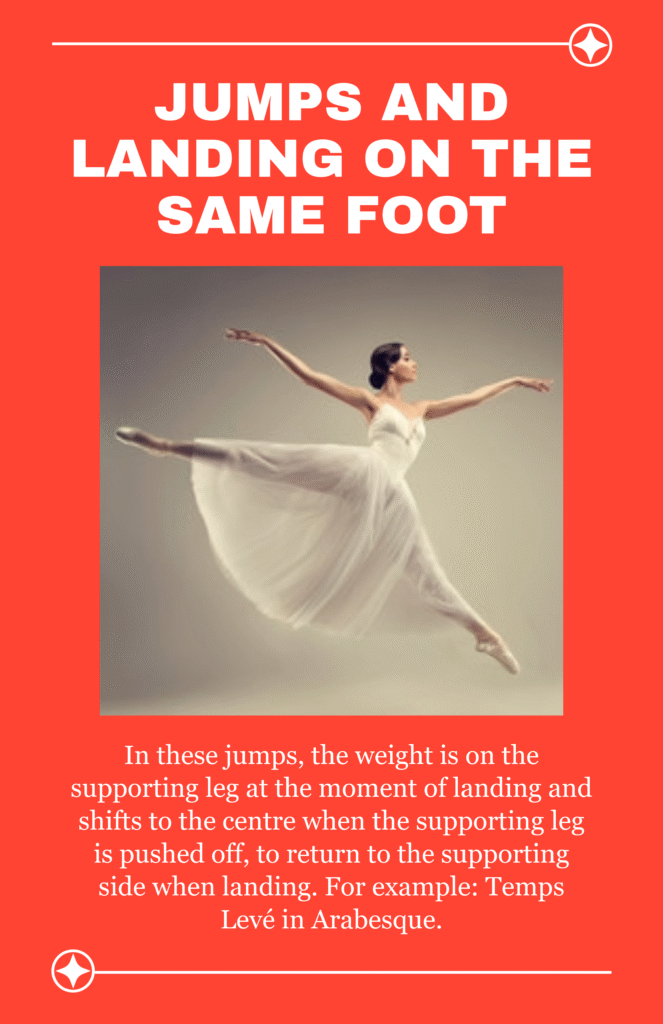
To develop strength, power, and control in the thighs, calves, ankles, and feet, you should practice the jumps at a slow pace. These abilities will help you to improve your elevation and land smoothly.
Examples:
- Temps levé on one foot
- Temps levé in poses (for example, in the first arabesque)
- Cabriole
- Double Cabriole
- Temps levé with a change of pose
- Sauté en arabesque
- Ballonné

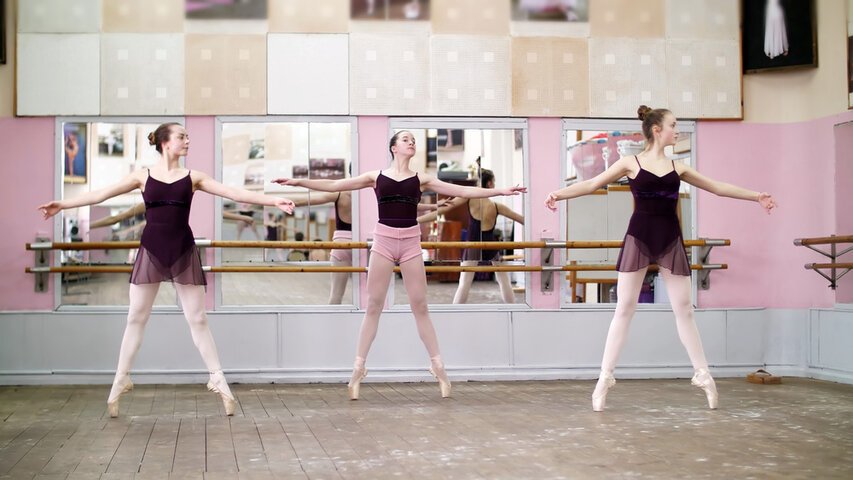



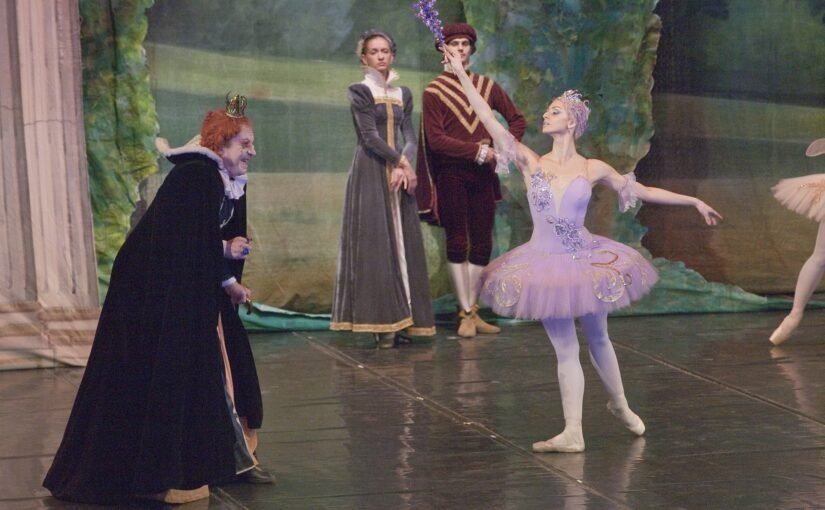
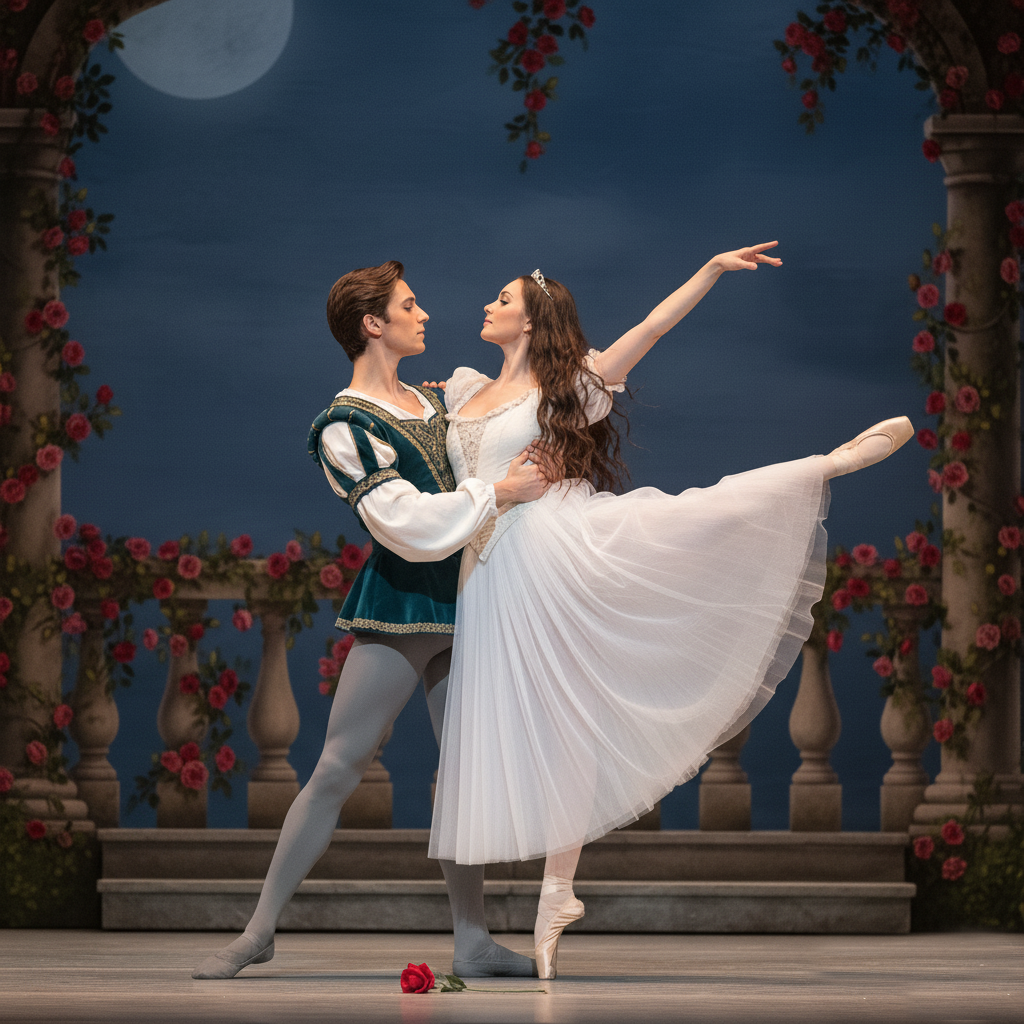
Leave a Reply